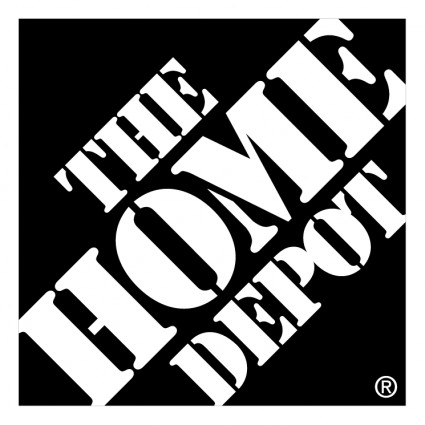Dividend Value Builder Newsletter
- Discover, Compare, and Evaluate Stocks Without Emotional Bias -
(Intrinsic Value Analysis For Over 300 Stocks)
Home Depot (HD) Stock Analysis

Home Depot Dividend
The Home Depot dividend has been paid continuously since 1993 and increased for 16 consecutive years; qualifying the company as a Dividend Contender.
Current Dividend Annualized: $9.20
Why You Might Want to Own the Company:
Home Depot has a long history of consistent earnings growth, strong cash flow, and shareholder-friendly policies such as dividends and share repurchases. Its dominant position in a resilient sector, commitment to innovation, and focus on serving both consumers and professionals make it an attractive long-term investment for those seeking income and stability with potential for moderate growth.
Is the stock price a Buy, Sell, or Hold?
Home Depot (HD) Stock Intrinsic Value – Margin of Safety Analysis
(updated September 2025)
Normalized Diluted Earning Per Share (TTM): $14.71
Free Cash Flow Per Share (TTM): $14.32
Cash Flow From Operations (CFO) Per Share (TTM): $17.98
Estimated Intrinsic Value: $275
Target Buy Price Based on Required Margin of Safety = $275
(Required Margin of Safety Based On Risk Stability
Grade:
A = 0%, B = 20%, C = 40%, D = 60%, F = 80%)
Target SELL Price Based on Estimated Intrinsic Value = $385
(Allow Overvaluation Adjusted by Risk Stability Grade:
A = 40%, B = 25%, C = 15%, D = 5%, F = 0%)
Risk / Stability Grade: A
A grade indicates a quality company with a strong balance sheet, high earnings quality, and a positive business environment. These stocks require the slimmest margin of safety within the stock universe.
B grade indicates a company with a good balance sheet, good earning quality, and a stable business environment. The margin of safety required should be greater than stocks with an A grade but less than the average stock.
C grade indicates a company with a sufficient balance sheet, at least average earnings quality, and a reasonably stable business environment. The margin of safety required is greater than A & B stocks, but less than D & F stocks.
D grade indicates a company in good standing but has issues that could affect its stability and long term risks. D rated stocks should require a large margin of safety when purchased.
F grade indicates a company with significant issues that are currently affecting its stability and long term risks. Require an extremely large margin of safety for F rated stocks when purchased.
Financial Risk Grade: B
A grade indicates an extremely low probability of a dividend cut. This rating is reserved for companies with strong balance sheets and/or excellent dividend histories.
B grade indicates a very low probability for a dividend cut.
C grade indicates a low probability for a dividend cut and/or average safety risk.
D grade indicates there are issues that should be considered concerning future dividend payments.
F grade indicates serious dividend safety risks. Investors should complete comprehensive due diligence before investing.
Earnings Quality Grade: A
A grade indicates earnings quality is high or far above average.
B grade indicates earnings quality is good and/or above average.
C grade indicates earnings quality is acceptable or average.
D grade indicates earnings quality is poor and requires thoughtful due diligence.
F grade indicates the quality of the earnings is poor or far below average requiring serious due diligence.
Earnings Report: 7/31/25
AAAMP Portfolios Position Disclosures:
Treasure Trove Dividend (TTD) – None
Global Dividend Value (GDV) – None
Dividend Growth & Income (DGI) – None
Global Value (GV) – None
Global Value Aggressive (GVA) – None
Global Conservative Income (GCI) – None
Global High Income (GHII) – None
Company Description
Sector: Consumer Cyclical
Industry: Home Improvement Stores
Company Overview:
The Home Depot, Inc. (NYSE: HD) is the world’s largest home improvement retailer, providing a wide range of products, tools, and services for DIY customers, professional contractors, and home remodelers. With thousands of stores across North America and a growing online presence, Home Depot offers building materials, appliances, garden supplies, and more, catering to both residential and commercial needs.
Company Strengths:
Home Depot benefits from its dominant market position, strong brand recognition, and extensive distribution network. Its ability to serve both DIY and professional customers drives consistent revenue, while investments in e-commerce and supply chain improvements enhance efficiency. The company’s strong cash flow and commitment to shareholder returns through dividends and buybacks make it a favorite among investors.
Company Challenges:
Home Depot faces challenges from economic downturns, as slower housing markets and reduced consumer spending can impact sales. Rising labor and material costs, supply chain disruptions, and increasing competition from online retailers and local hardware stores also pose risks. Additionally, shifts in consumer preferences toward sustainability and smart home technology require continuous adaptation and investment.
Dividend Value Builder Newsletter Membership (24 Issues) - $129/Yr.
Minimize Large Portfolio Drawdowns
Invest With Confidence In Less Time - Manage Your Portfolio Without Behavioral Errors
Disclaimer:
While Arbor Investment Planner has used reasonable efforts to obtain information from reliable sources, we make no representations or warranties as to the accuracy, reliability, or completeness of third-party information presented herein. The sole purpose of this analysis is information. Nothing presented herein is, or is intended to constitute investment advice. Consult your financial advisor before making investment decisions.
